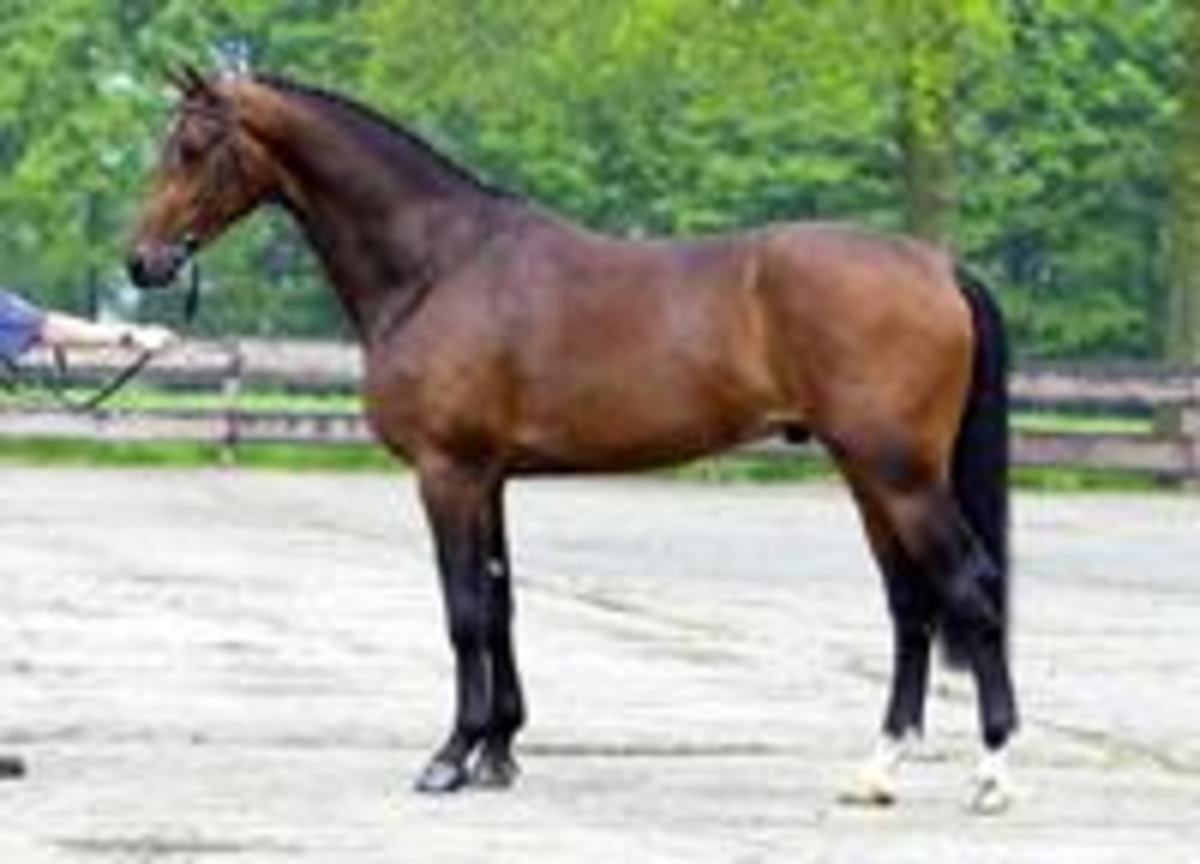Home > Horse Care > Breeding > Breed Profile: Dutch Warmblood
Breed Profile: Dutch Warmblood
- July 25, 2019
- ⎯ Equus
Origins
The Dutch Warmblood is a fairly modern breed that was derived from two native Dutch Breeds — the Gelderlander and the Groningen. The breeders intended to combine the best characteristics of each breed and then the resulting offspring were further refined with the introduction of Thoroughbred blood. This resulted in athletic horses, with good sloping shoulders, giving them a flatter and longer action, as well as longer necks and shorter backs than the native Dutch breeds. The addition of thoroughbred blood also improved the Dutch horses’ scope and stamina.
Other related warmbloods, such as the Oldenburger and the Hanoverian, were used to clarify some minor conformation details and to emphasize the desirable calm temperament.
As with most warmbloods, the Dutch Warmblood continues to evolve. Today, the KWPN recognizes three different categories of Dutch Warmblood horse — the athletic sport horse type, the elegant harness horse type and the original Gelderland working horse type.
Characteristics
Dutch Warmblood horses usually stand over 16 hands, with some reaching 17 hands. The most predominent colors are bay and chestnut, but blacks and greys are also seen. White markings on the face and legs are common.
Hilltop Rousseau, Dutch Warmblood Stallion.
Photograph © Hilltop Farm. Used with permission.

The head is refined, usually with a straight profile. The neck is long and arched, meeting fairly prominent withers. The shoulder is well-sloped and the girth is deep, with plenty of heart room.
The forelegs are strong, with well-muscled forearms. The hindquarters are powerful and the hock joints are low to the ground. These factors combine to give great power to the “engine” of the Dutch Warmblood.
There are differences in the presence and the action between the sport horse, the harness horse and the Gelderland type,. The sport horse is bred to excel in dressage and jumping. The harness horse has a proud, high head carriage and high knee action. The Gelderland has retained more of the qualities of a light draft horse.
Selection
Breeding and selection of the Dutch Warmblood horse is strictly controlled and monitored by the Warmbloed Paardenstamboek Nederland.
Keurings, or inspections, are held each year in the Netherlands and in North America. Horses are presented at these keurings at age three or older. Only when they have proved that they possess the necessary quality and that they meet the breed standard are they entered into the Studbook and may be branded as Dutch Warmblood horses.
The selection process doesn’t end there. Stallions and mares both undergo regular reevaluations and are given classifications according to their contribution to the breed, including their own achievements and that of their offspring.
Uses
The Dutch Warmblood is a very versatile horse. It excels in top level competion, in dressage, show-jumping, eventing and even carriage driving. The Gelderlander type is also popular as a light draft horse.
The calm, even temperament makes them easy to work with and they are willing to turn a hoof, so to speak, to just about anything.
If you scan the leader boards at any national or international competition, you are sure to find that there are Dutch Warmbloods on the list.
Bibliography:
The Encyclopedia of the Horse – Elwyn Hartley-Edwards. ISBN 1-56458-614-6





